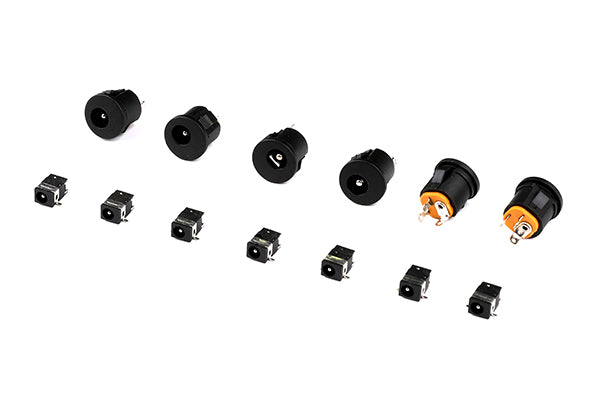Audio connector
Audio connector
Audio Connector: A Brief Introduction
An audio connector is an electro-mechanical device designed to transmit analog or digital audio signals between components in an audio system. These connectors facilitate the transfer of sound signals from sources (e.g., microphones, instruments, media players) to processing units (e.g., amplifiers, mixers) and output devices (e.g., speakers, headphones). They are critical for maintaining signal integrity, minimizing noise, and ensuring compatibility across audio equipment.
Key Functions and Characteristics:
-
Signal Transmission: Carry low-voltage audio signals with minimal loss or interference.
-
Shielding: Many designs include shielding to protect against electromagnetic interference (EMI) and radio-frequency interference (RFI), preserving audio quality.
-
Durability: Built to withstand repeated mating cycles, physical stress, and environmental factors (e.g., oxidation).
-
Standardization: Follow widely adopted form factors and wiring schemes to ensure interoperability between devices from different manufacturers.
Common Types and Applications:
-
TS (Tip-Sleeve):
-
Structure: Two conductors (tip for signal, sleeve for ground).
-
Use: Unbalanced mono audio signals, such as electric guitar cables or older audio equipment.
-
Example: 6.35 mm (¼ inch) guitar cable.
-
-
TRS (Tip-Ring-Sleeve):
-
Structure: Three conductors (tip: left channel/positive, ring: right channel/negative, sleeve: ground).
-
Use: Balanced mono signals or unbalanced stereo signals. Common in professional audio, headphones, and patch cables.
-
Example: 3.5 mm (⅛ inch) headphone jack.
-
-
TRRS (Tip-Ring-Ring-Sleeve):
-
Structure: Four conductors (e.g., tip: left audio, ring: right audio, ring: microphone, sleeve: ground).
-
Use: Stereo audio with a microphone channel, often found in smartphone headphones and headsets.
-
-
XLR:
-
Structure: Three to seven pins in a circular housing, with a secure locking mechanism.
-
Use: Balanced audio signals in professional settings (e.g., microphones, mixers, amplifiers). Known for robustness and noise rejection.
-
-
RCA (Phono Connector):
-
Structure: Two connectors per channel (center pin for signal, outer ring for ground).
-
Use: Unbalanced stereo audio in consumer electronics (e.g., home theater systems, turntables).
-
-
Digital Audio Connectors:
-
Optical (TOSLINK): Transmits digital audio as light pulses through a fiber optic cable, immune to electrical interference.
-
Coaxial (S/PDIF): Transmits digital audio as electrical signals over a coaxial cable.
-
Critical Design Features:
-
Contact Materials: Gold, nickel, or silver plating to reduce oxidation and ensure reliable conductivity.
-
Connector Housing: Plastic or metal shells providing mechanical support and shielding.
-
Locking Mechanisms: Features like XLR locks or threaded collars prevent accidental disconnection.
-
Impedance Matching: Designed to match the impedance of audio equipment for optimal signal transfer.
Applications Across Industries:
-
Consumer Electronics: Headphones, smartphones, home audio systems.
-
Professional Audio: Recording studios, live sound systems, broadcast equipment.
-
Musical Instruments: Electric guitars, amplifiers, synthesizers.
-
Telecommunications: Headsets, conference systems.
無法載入取貨服務供應情況
有庫存
查看完整資訊
